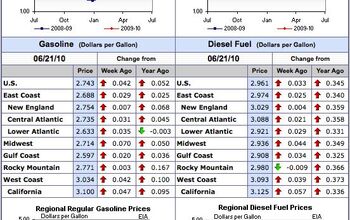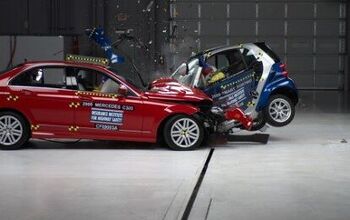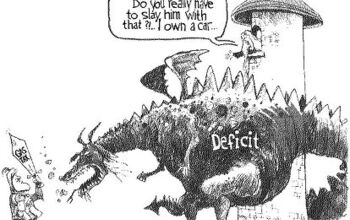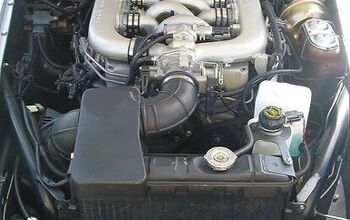Ask The Best And Brightest: Is Fuel Economy A Luxury Item?

Since my return on Friday from the New York Auto Show, my friends and co-workers have been relentlessly asking me, “What was the big story there?” After I tell them the big story — that I saw Mike Stern play in the Village with some friends and then squired two fabulous ladies around New York until 5:30AM — they ask me to shut up about that and tell them about the car story.
Fair enough. The story this year is fuel economy, just like it was thirty years ago. The difference this time? Fuel economy, like every other crappy thing in this world, from Russian vodka to TAG Heuer watches, has gone upscale.
It’s been a long time since EPA ratings were the biggest part of auto advertisements, but those days are back. Forty miles per gallon is the gateway to respectability. Hyundai debuted yet another 40MPG car — the Accent sedan — in what is becoming a very fuel-economy-centric lineup. Kia showed the Rio. Chevrolet asked the world to wait a year for a 38MPG Malibu while Ford put “41 MPG” in bold letters on the side of its aging-but-still-hot Fusion Hybrid. Volkswagen put big numbers on the side of its cars and crossed its fingers that nobody had seen the price of diesel on their way in to the show. Subaru showed a 36MPG Impreza but made a virtue of the number by noting that it was for an all-wheel-drive vehicle. Let’s not forget the new Prius “family of vehicles”, or the upcoming Toyota/Scion iQ.
We’ve seen this race before, back in 1982 when several manufacturers debuted cars with EPA highway ratings of 50MPG or more. TTAC’s Michael Karesh has done the math and notes that 50MPG on the 1982 EPA highway test is really about 35MPG today, so today’s fuel-economy superstars are actually more efficient that their predecessors. I have to wonder how much of the gap comes from computers that can accurately deliver special fuel maps for EPA testing, but perhaps I’m being cynical.
The difference back then was that fuel economy was sold on a purely economic basis. Perhaps there was a tiny bit of fear about fuel rationing in major cities mixed in with the money pitch, but by and large the selling point of the 50MPG car was cost of operation. The mileage champions — Honda 1300FE Civic, Toyota Starlet, Dodge/Plymouth Miser models — were all cheap cars. They looked cheap, they were cheap inside, and they were cheap to buy. This made perfect sense. If the buyer was concerned about saving ten bucks a week on fuel, he was probably also unwilling to buy a top-of-the-line model of any particular car.
Fast-forward to the 2011 NYIAS, and we see that “Eco” and “SFE” packages are all the rage. You pay more to pay less, dontcha know. Although Hyundai and Kia aren’t charging more for their 40MPG cars, neither have they skimped on interior appointments for the base models of those cars. We already know that the Prius commands a significant premium over the equivalent Corolla, and if you insist on comparing it to a Camry, it still costs more than a base 4cyl Camry does. Let’s not forget that VW’s fast-selling TDI models are four to five grand more expensive than their gas-powered equivalents. Fuel economy is becoming a luxury item.
Some rough math: over 100,000 miles, the 40MPG car saves 833 gallons over the 30MPG car. If fuel reaches $5 a gallon everywhere and stays there, that’s a savings of nearly $4200, but that savings takes a long time to arrive. I’d be surprised if most buyers were doing that math and making their decision based on it; instead, I suspect that social acceptability and personal concerns about appearance of consumption are responsible for the newfound popularity of 40MPG cars. In other words, it’s strictly emotional, which means it can be marketed to, which means it can be sold as a luxury good, which means it will cost more, even if it doesn’t have to.
What say you, TTACers? Would you pay more for “SFE”, “Eco”, “HSD”, or “TDI”? And why do you think everybody else might?

More by Jack Baruth
Latest Car Reviews
Read moreLatest Product Reviews
Read moreRecent Comments
- Amy I owned this exact car from 16 until 19 (1990 to 1993) I miss this car immensely and am on the search to own it again, although it looks like my search may be in vane. It was affectionatly dubbed, " The Dragon Wagon," and hauled many a teenager around the city of Charlotte, NC. For me, it was dependable and trustworthy. I was able to do much of the maintenance myself until I was struck by lightning and a month later the battery exploded. My parents did have the entire electrical system redone and he was back to new. I hope to find one in the near future and make it my every day driver. I'm a dreamer.
- Jeff Overall I prefer the 59 GM cars to the 58s because of less chrome but I have a new appreciation of the 58 Cadillac Eldorados after reading this series. I use to not like the 58 Eldorados but I now don't mind them. Overall I prefer the 55-57s GMs over most of the 58-60s GMs. For the most part I like the 61 GMs. Chryslers I like the 57 and 58s. Fords I liked the 55 thru 57s but the 58s and 59s not as much with the exception of Mercury which I for the most part like all those. As the 60s progressed the tail fins started to go away and the amount of chrome was reduced. More understated.
- Theflyersfan Nissan could have the best auto lineup of any carmaker (they don't), but until they improve one major issue, the best cars out there won't matter. That is the dealership experience. Year after year in multiple customer service surveys from groups like JD Power and CR, Nissan frequency scrapes the bottom. Personally, I really like the never seen new Z, but after having several truly awful Nissan dealer experiences, my shadow will never darken a Nissan showroom. I'm painting with broad strokes here, but maybe it is so ingrained in their culture to try to take advantage of people who might not be savvy enough in the buying experience that they by default treat everyone like idiots and saps. All of this has to be frustrating to Nissan HQ as they are improving their lineup but their dealers drag them down.
- SPPPP I am actually a pretty big Alfa fan ... and that is why I hate this car.
- SCE to AUX They're spending billions on this venture, so I hope so.Investing during a lull in the EV market seems like a smart move - "buy low, sell high" and all that.Key for Honda will be achieving high efficiency in its EVs, something not everybody can do.


































Comments
Join the conversation
I did... bought a 335d and love it!
I looked into cost of converting my vehicle to propane. It's $3,600 Canadian for a V6 engine. Gas here is $5.80 a gallon, donkey p*ss (aka with ethanol) is $5.24. Propane is about 50% of donkey p*ss. So, conversion would pay for itself in about 40 full fill ups.